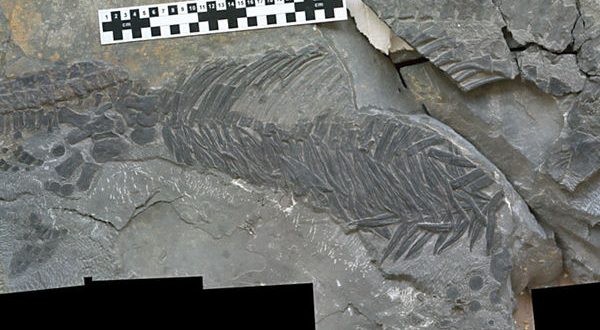The discovery hints at life after mass extinction and shows early marine reptiles did not evolved slowly after Permian-Triassic mass extinction 250 million years ago.
The new species, an ichthyosaur named Sclerocormus parviceps, was a marine reptile dating to the Lower Triassic, and it looked nothing like other ichthyosaurs scientists have studied.
Ichthyosaurs were a group of marine reptiles which typically resembled dolphins in appearance, with streamlined bodies, long beak-like snouts and powerful tail fins, researchers from the Field Museum in Chicago explained in a statement Monday. The newly discovered species, however, had a much shorter snout and a long, whip-like tail that lacked triangular flukes.
Dubbed Sclerocormus parviceps, this ichthyosauriform also lacked the conical teeth that many of its relatives used to catch prey. In fact, it didn’t have teeth at all, instead using its short snout as a tool to create pressure and inhale food like a syringe, the authors added. The differences between this creature and other ichthyosaurs are so radical that it has led to a startling observation.
“Sclerocormus tells us that ichthyosauriforms evolved and diversified rapidly at the end of the Lower Triassic period,” said Olivier Rieppel, the Rowe Family Curator of Evolutionary Biology at the museum. “We don’t have many marine reptile fossils from this period, so this specimen is important because it suggests that there’s diversity that hasn’t been uncovered yet.”
Newfound species could improve understanding of evolution
Roughly 250 million years ago, volcanic eruptions, rising sea levels and climate change resulted in a mass extinction event that wiped out 96 percent of all marine species. While aquatic life was able to rebound in the years that followed, scientists long believed that the first marine reptiles to emerge following that mass extinction event evolved slowly.
The new discovery challenges that assumption, as the Sclerocormus evolved into a different form “very quickly, in short bursts of lots of change, in leaps and bounds,” Rieppel explained. Its rapid evolution is inconsistent with Darwin’s model of evolution, which is comprised of small, gradual changes that take place over an extended period of time, and provides new insight into how some species respond to environmental pressures like those responsible for the mass extinction.
“We’re in a mass extinction right now, not one caused by volcanoes or meteorites, but by humans,” Rieppel said. “So while the extinction 250 million years ago won’t tell us how to solve what’s going on today, it does bear on the evolutionary theory at work. How do we understand the recovery and rebuilding of a food chain, of an ecosystem? How does that get fixed, and what comes first?”
Agencies/Canadajournal

 Canada Journal – News of the World Articles and videos to bring you the biggest Canadian news stories from across the country every day
Canada Journal – News of the World Articles and videos to bring you the biggest Canadian news stories from across the country every day

